Reb MacRath's Blog, page 3
February 24, 2019
The Manly Art of Ironing
Has a small decision in your life ever been a real Eureka moment? Say, instead of doing something the usual way you decided to do it another. And then, seeing that the new way was better, you saw a slew of other things that called for changing too. Not just new ways of doing things, new styles of inner architecture.
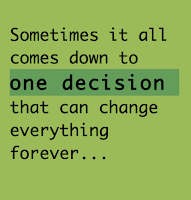
My adventure started with a lovely pre-loved flannel shirt with two pockets whose flaps needed pressing. I'd acquired so many shirts that I'd already started to dread future cleaning bills. Now and then, I'd think wistfully of buying an iron and ironing board--but I was a man. Men don't iron. Yesterday, though, on my way to the dry cleaners, I stopped. How hard could it be to learn the fundamentals of ironing shirts? And what would the cost be, compared to dry cleaning some 65 shirts every year?
I decided to test my ingenuity and skill, starting off with a visit to Target. I found a dozen-odd irons to choose from and an array of ironing boards. My determining factors: studio-friendly size...a brand name that I trusted...cost.
I left with a small Sunbeam steam iron:

And, to go with it, a countertop ironing board:
[image error]
My total cost was less than that of dry cleaning just 30 shirts. But I still didn't know how to iron!
Thumbs up to Sunbeam for clear instructions on the use of and care for the iron. And the ironing board mounted flat on the kitchen countertop. I'd learned I could use the steam function with tap water--not distilled, as I'd guessed. Or I could dry iron if I pleased. I pleased, for my initial run at least. And I'd start with the flap-wild shirt pockets and collar.
It sounds silly to make a big deal of this, yes. But as an exercise in mastery, there's nothing silly about it. Next: what were my options for ironing a full shirt? I could fine-tune, as I pleased, but were there agreed-upon basics? Did I need a book to learn this or should I ask everybody I knew? No, I'd learn this privately, with a little help online.
The online friend I've learned to trust for all masculine matters is The Art of Manliness. And there I found just what I needed:
https://www.youtube.com/watch?v=0EpinulvKTA
Now the great ripple effect was in motion. I began to think of other ways and modes of thought that needed changing.
Writing:
1) To gain speed, I don't necessarily need to compose more quickly. I do need, though, to dictate my handwritten drafts into Dragon Naturally Speaking regularly as I go.
2) I need to make better use of the promoting services Amazon offers now that I have a modest hit in The Big Bopper. (50-plus 4 and 5-star reviews.)
3) I should look into approaching Kirkus for a review of my WIP, which is strong and offbeat.
Job search:
1) I need to follow my original plan to sit tight until mid-March when I've made full use of my medical/dental benefits. But instead of doing nothing, I need to prepare.
2) Preparation includes touting the certificate I've received from an online course in medical terminology.
3) I should also buff my resume to justify the higher salary I'm worth.
And so on. You catch my drift. Your own adventure can begin with anything...including a neatly pressed shirt.
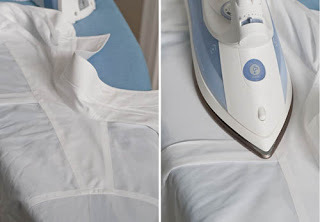

My adventure started with a lovely pre-loved flannel shirt with two pockets whose flaps needed pressing. I'd acquired so many shirts that I'd already started to dread future cleaning bills. Now and then, I'd think wistfully of buying an iron and ironing board--but I was a man. Men don't iron. Yesterday, though, on my way to the dry cleaners, I stopped. How hard could it be to learn the fundamentals of ironing shirts? And what would the cost be, compared to dry cleaning some 65 shirts every year?
I decided to test my ingenuity and skill, starting off with a visit to Target. I found a dozen-odd irons to choose from and an array of ironing boards. My determining factors: studio-friendly size...a brand name that I trusted...cost.
I left with a small Sunbeam steam iron:

And, to go with it, a countertop ironing board:
[image error]
My total cost was less than that of dry cleaning just 30 shirts. But I still didn't know how to iron!
Thumbs up to Sunbeam for clear instructions on the use of and care for the iron. And the ironing board mounted flat on the kitchen countertop. I'd learned I could use the steam function with tap water--not distilled, as I'd guessed. Or I could dry iron if I pleased. I pleased, for my initial run at least. And I'd start with the flap-wild shirt pockets and collar.
It sounds silly to make a big deal of this, yes. But as an exercise in mastery, there's nothing silly about it. Next: what were my options for ironing a full shirt? I could fine-tune, as I pleased, but were there agreed-upon basics? Did I need a book to learn this or should I ask everybody I knew? No, I'd learn this privately, with a little help online.
The online friend I've learned to trust for all masculine matters is The Art of Manliness. And there I found just what I needed:
https://www.youtube.com/watch?v=0EpinulvKTA
Now the great ripple effect was in motion. I began to think of other ways and modes of thought that needed changing.
Writing:
1) To gain speed, I don't necessarily need to compose more quickly. I do need, though, to dictate my handwritten drafts into Dragon Naturally Speaking regularly as I go.
2) I need to make better use of the promoting services Amazon offers now that I have a modest hit in The Big Bopper. (50-plus 4 and 5-star reviews.)
3) I should look into approaching Kirkus for a review of my WIP, which is strong and offbeat.
Job search:
1) I need to follow my original plan to sit tight until mid-March when I've made full use of my medical/dental benefits. But instead of doing nothing, I need to prepare.
2) Preparation includes touting the certificate I've received from an online course in medical terminology.
3) I should also buff my resume to justify the higher salary I'm worth.
And so on. You catch my drift. Your own adventure can begin with anything...including a neatly pressed shirt.

Published on February 24, 2019 09:30
February 11, 2019
Let Your Writer's Bible Save You
Let's begin with the moral, up front: a mountain of knowledge and research are worth no more than a pile of beans if you can't retrieve what you need in a blink. If you've found yourself wondering 'I know I read about this somewhere...but where?', then you know what I mean. You try Googling the subject, finding thousands of related entries...but not the one you want. Then you look at the shelves of books you read for research...but where in those thousands of pages is the one nugget you need? Or--here's something for all series writers--what are the ages/heights/weights/histories of your characters?
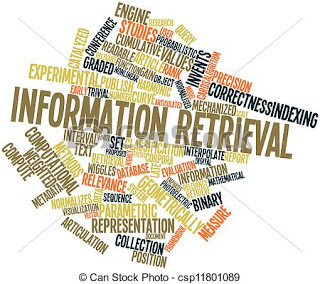
Years ago, I'd tried mastering this challenge by using index cards. But a pair of problems bested me:1) I had to write my entries in longhand, an arduous process often yielding illegible results.2) The eventual bulk became daunting as the card numbers swelled to a thousand, then five...I'd have needed a team of monks for updating and cataloging.
Through the years I tried other strategies, none of them truly successful. But last year, when I published the first of the Seattle BOP mysteries, I knew that I needed a Bible. If I intended to write convincing mysteries about insurance fraud, I'd damned well better know my stuff. I faced the same problems I outlined above after reading a shelf filled with pricey, first-class texts over the course of a year.
Here's the strategy I followed as a writer requiring hard vs. digital records:
1) I flipped through every text, tagging with Post-It Notes the passages I'd already checked.
2) I bought a new 5x8 ringed ARC notebook with detachable pages. As time passed, I knew, I'd be adding more pages or shifting some about. I paid more a handsome notebook that I'd take pride in keeping.
3) I put Dragon Naturally Speaking to work.
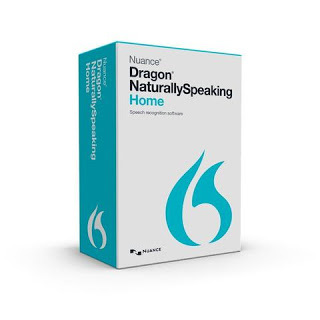
After selecting the double-page format, I dictated all the passages I'd tagged, careful to list author, book, and page. I dictated in full for three reasons: I couldn't be sure, in advance, how much or how little I'd use. I wanted protection against accidental plagiarising. And I wanted to be able to cite my resources if anyone questioned my research.
4) When I'd finished--at this first edition of my Bible--I had about 10,000 words. I took the flash drive to FedEx/Kino and had them copy and cut the pages for my ARC.
5) After hole-lunching the pages--one page at a time, alas--I mounted them with clear section dividers between. Once again, I needed speed!
Results of my first trial run:
In the third draft of the new series' second entry, I needed to find two things quickly: information I'd gleaned about 'medical mills', just enough to make my hero seem to know more than he does. And I needed a cool trick I'd gleaned, something or other about office phones. I found my two answers in twenty seconds, total.
What's up next?
I need to add a section for the main series characters. Luckily, this is a new series, so there's no need to go back through all the Boss MacTacin mysteries. At least not yet. But I do need to re-read The Big Bopper, making notes of all the key characters' data. Readers are right to raise hell over inconsistencies from book to book. (Hey, what about X's green eyes? You said Y was 29!)
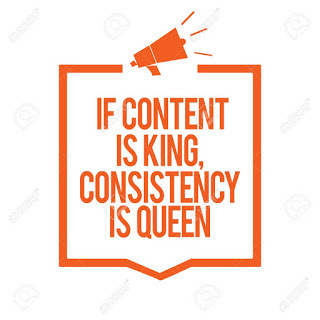
The first edition of my personal Good Book has already saved my bacon twice. From here on, the key for me is keep researching--setting my series apart from the pack--then dictating and printing my quotes as I go.
I plan to sin no further now that I've seen the light. Write your own, or keep yours digitally, and I'm certain you'll soon say the same.


Years ago, I'd tried mastering this challenge by using index cards. But a pair of problems bested me:1) I had to write my entries in longhand, an arduous process often yielding illegible results.2) The eventual bulk became daunting as the card numbers swelled to a thousand, then five...I'd have needed a team of monks for updating and cataloging.
Through the years I tried other strategies, none of them truly successful. But last year, when I published the first of the Seattle BOP mysteries, I knew that I needed a Bible. If I intended to write convincing mysteries about insurance fraud, I'd damned well better know my stuff. I faced the same problems I outlined above after reading a shelf filled with pricey, first-class texts over the course of a year.
Here's the strategy I followed as a writer requiring hard vs. digital records:
1) I flipped through every text, tagging with Post-It Notes the passages I'd already checked.
2) I bought a new 5x8 ringed ARC notebook with detachable pages. As time passed, I knew, I'd be adding more pages or shifting some about. I paid more a handsome notebook that I'd take pride in keeping.
3) I put Dragon Naturally Speaking to work.

After selecting the double-page format, I dictated all the passages I'd tagged, careful to list author, book, and page. I dictated in full for three reasons: I couldn't be sure, in advance, how much or how little I'd use. I wanted protection against accidental plagiarising. And I wanted to be able to cite my resources if anyone questioned my research.
4) When I'd finished--at this first edition of my Bible--I had about 10,000 words. I took the flash drive to FedEx/Kino and had them copy and cut the pages for my ARC.
5) After hole-lunching the pages--one page at a time, alas--I mounted them with clear section dividers between. Once again, I needed speed!
Results of my first trial run:
In the third draft of the new series' second entry, I needed to find two things quickly: information I'd gleaned about 'medical mills', just enough to make my hero seem to know more than he does. And I needed a cool trick I'd gleaned, something or other about office phones. I found my two answers in twenty seconds, total.
What's up next?
I need to add a section for the main series characters. Luckily, this is a new series, so there's no need to go back through all the Boss MacTacin mysteries. At least not yet. But I do need to re-read The Big Bopper, making notes of all the key characters' data. Readers are right to raise hell over inconsistencies from book to book. (Hey, what about X's green eyes? You said Y was 29!)

The first edition of my personal Good Book has already saved my bacon twice. From here on, the key for me is keep researching--setting my series apart from the pack--then dictating and printing my quotes as I go.
I plan to sin no further now that I've seen the light. Write your own, or keep yours digitally, and I'm certain you'll soon say the same.

Published on February 11, 2019 11:19
January 27, 2019
It's that time, cat time, again

I adore cats and always have. For ten years, in Atlanta and Portland, I was blessed with the companionship of a brother-sister pair of cats named Romeo and Juliette. They kept me sane in difficult times. Then, when Romeo died in his tenth year, I took Juliette with me to Charlotte. We formed an especially close bond in the final five years of her life.
After her death, I moved to Seattle, where I've been cat-less for over four years. Here's what those four years have taught me:
1) We can come up with many good reasons for putting off getting a cat: I'm not home enough to take proper care of a pet...I can't afford the food and vet bills...It hurts too much to see a pet die...A cat may destroy my apartment...Etc., etc., etc.
2) If we're meant to have a cat, one day we'll know that the pros outweigh the cons. And we'll begin tackling the cons one by one: pet insurance...a better paying job with a more cat-friendly schedule...a reasonably priced pet supply store with cool toys and scratching posts...a no cat zone, if necessary, for precious clothes or papers.
3) It isn't a chore and it's more than a duty to care and look after a small, furry friend who wants nothing more than our love in return. Well, that and cool high spots to jump...delightful things to hang from...and ways to drive us delightfully nuts.
4) Finally, it's a lot worse than selfish for us to refuse to recover from the passing of a cat friend. Other cats need loving homes and deserve a place in the procession.
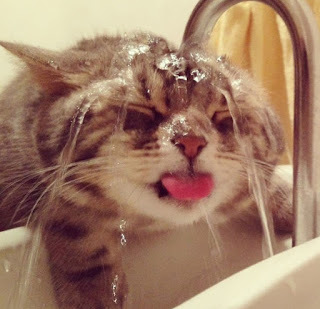
Cat Day will be in March for me. So far, I've found a fine place for adopting and a great pet store for supplies. I'm looking into pet insurance and my apartment building will work will allow me to spread out the pet security deposit. The main remaining task is to make my place cat-friendly, with a few good jumping spots, window seats, etc. My dressing room will be off limits when I'm at work our out.

Gender: I want a female cat.
Age: I think 1-2 years old will be best.
Name: I think I'll go with Nova unless another name comes to mind when I meet the right cat...the just-purrfect cat for a writer.
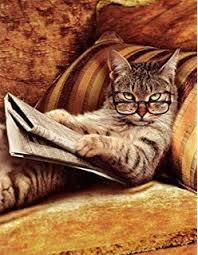
Published on January 27, 2019 06:47
Me Speak Catlish Pretty Soon!

I adore cats and always have. For ten years, in Atlanta and Portland, I was blessed with the companionship of a brother-sister pair of cats named Romeo and Juliette. They kept me sane in difficult times. Then, when Romeo died in his tenth year, I took Juliette with me to Charlotte. We formed an especially close bond in the final five years of her life.
After her death, I moved to Seattle, where I've been cat-less for over four years. Here's what those four years have taught me:
1) We can come up with many good reasons for putting off getting a cat: I'm not home enough to take proper care of a pet...I can't afford the food and vet bills...It hurts too much to see a pet die...A cat may destroy my apartment...Etc., etc., etc.
2) If we're meant to have a cat, one day we'll know that the pros outweigh the cons. And we'll begin tackling the cons one by one: pet insurance...a better paying job with a more cat-friendly schedule...a reasonably priced pet supply store with cool toys and scratching posts...a no cat zone, if necessary, for precious clothes or papers.
3) It isn't a chore and it's more than a duty to care and look after a small, furry friend who wants nothing more than our love in return. Well, that and cool high spots to jump...delightful things to hang from...and ways to drive us delightfully nuts.
4) Finally, it's a lot worse than selfish for us to refuse to recover from the passing of a cat friend. Other cats need loving homes and deserve a place in the procession.

Cat Day will be in March for me. So far, I've found a fine place for adopting and a great pet store for supplies. I'm looking into pet insurance and my apartment building will work will allow me to spread out the pet security deposit. The main remaining task is to make my place cat-friendly, with a few good jumping spots, window seats, etc. My dressing room will be off limits when I'm at work our out.

Gender: I want a female cat.
Age: I think 1-2 years old will be best.
Name: I think I'll go with Nova unless another name comes to mind when I meet the right cat...the just-purrfect cat for a writer.

Published on January 27, 2019 06:47
December 30, 2018
See 20-20 Now for 2020!
I've lost track of the number of planners I've tried since I first started to plan. Monthly, weekly, daily...Shirt-pocket, coat pocket, attache size...Planners with far too much room for appointments and too little space for To Do's...I've loved them all in my fashion but found myself starting to drift within months.
If only, I'd think, I could find one that was a sort of all-in-one. A monthly/weekly/daily tool to help me get into, and stay, in high gear.
Amazon Basics has just come to the rescue.
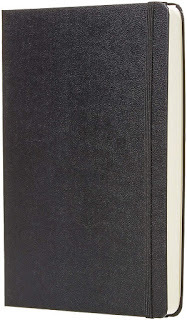
The Moleskine-quality journal comes in two sizes, each priced at $9.99: 5"x8.25" hardcover (shown) and 8"x11" softcover
Monthly pages: 6 months on 12 pages
Number of weekly pages: 26 weeks on 52 pages
Number of daily pages: 186 days on 186 pages
The undated pages are a boon, enabling you to begin any time. I started mid-December. And both layout and design are terrific, with space not just for appointments and notes but priorities, habits to learn and reviews.
Two last things:1) The just slightly oversized 5x 8.25" hardcover version is about the same size as some new hardback books. This reinforces the sense of this being a bonafide book of life. 2) The 3 in 1 format may take a bit of work at first, but the habit is well worth acquiring.
I keep my mine with one strict rule: if I write something down, then I do it!
Here's the link, if you're inclined:
https://www.amazon.com/gp/product/B078GVYRZG
If only, I'd think, I could find one that was a sort of all-in-one. A monthly/weekly/daily tool to help me get into, and stay, in high gear.
Amazon Basics has just come to the rescue.

The Moleskine-quality journal comes in two sizes, each priced at $9.99: 5"x8.25" hardcover (shown) and 8"x11" softcover
Monthly pages: 6 months on 12 pages
Number of weekly pages: 26 weeks on 52 pages
Number of daily pages: 186 days on 186 pages
The undated pages are a boon, enabling you to begin any time. I started mid-December. And both layout and design are terrific, with space not just for appointments and notes but priorities, habits to learn and reviews.
Two last things:1) The just slightly oversized 5x 8.25" hardcover version is about the same size as some new hardback books. This reinforces the sense of this being a bonafide book of life. 2) The 3 in 1 format may take a bit of work at first, but the habit is well worth acquiring.
I keep my mine with one strict rule: if I write something down, then I do it!
Here's the link, if you're inclined:
https://www.amazon.com/gp/product/B078GVYRZG
Published on December 30, 2018 16:33
A New Strategy for a New Year
I've lost track of the number of planners I've tried since I first started to plan. Monthly, weekly, daily...Shirt-pocket, coat pocket, attache size...Planners with far too much room for appointments and too little space for To Do's...I've loved them all in my fashion but found myself starting to drift within months.
If only, I'd think, I could find one that was a sort of all-in-one. A monthly/weekly/daily tool to help me get into, and stay, in high gear.
Amazon Basics has just come to the rescue.

The Moleskine-quality journal comes in two sizes, each priced at $9.99: 5"x8.25" hardcover (shown) and 8"x11" softcover
Monthly pages: 6 months on 12 pages
Number of weekly pages: 26 weeks on 52 pages
Number of daily pages: 186 days on 186 pages
The undated pages are a boon, enabling you to begin any time. I started mid-December. And both layout and design are terrific, with space not just for appointments and notes but priorities, habits to learn and reviews.
Two last things:1) The just slightly oversized 5x 8.25" hardcover version is about the same size as some new hardback books. This reinforces the sense of this being a bonafide book of life. 2) The 3 in 1 format may take a bit of work at first, but the habit is well worth acquiring.
I keep my mine with one strict rule: if I write something down, then I do it!
Here's the link, if you're inclined:
https://www.amazon.com/gp/product/B078GVYRZG
If only, I'd think, I could find one that was a sort of all-in-one. A monthly/weekly/daily tool to help me get into, and stay, in high gear.
Amazon Basics has just come to the rescue.

The Moleskine-quality journal comes in two sizes, each priced at $9.99: 5"x8.25" hardcover (shown) and 8"x11" softcover
Monthly pages: 6 months on 12 pages
Number of weekly pages: 26 weeks on 52 pages
Number of daily pages: 186 days on 186 pages
The undated pages are a boon, enabling you to begin any time. I started mid-December. And both layout and design are terrific, with space not just for appointments and notes but priorities, habits to learn and reviews.
Two last things:1) The just slightly oversized 5x 8.25" hardcover version is about the same size as some new hardback books. This reinforces the sense of this being a bonafide book of life. 2) The 3 in 1 format may take a bit of work at first, but the habit is well worth acquiring.
I keep my mine with one strict rule: if I write something down, then I do it!
Here's the link, if you're inclined:
https://www.amazon.com/gp/product/B078GVYRZG
Published on December 30, 2018 16:33
December 9, 2018
Post-Producers Bring Home the Bacon
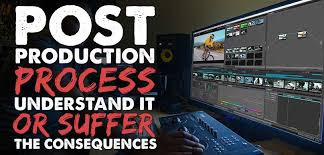
Get this: Quentin Tarantino has begun post-production on Once Upon a Time in Hollywood, for which he wrote the screenplay in 2017. Principal photography began in June of this year and the release date is scheduled for July 26, 2019. So the actual shooting time was 5-6 months, book-ended by long periods of preparation and post-production.
This process is much on my mind nowadays, for there's been a change in my thinking about the writing process. Instead of seeing a work in progress as a long, brutal sequence of drafts, I'v come to see it as a lot like filming:
--Months of outlining, research and 'location' work: scouting the book's best settings etc.
--First draft, the literary equal of principal photography--with all the out-takes, bloopers and footage bound for the cutting room floor.
--Post-production. Anywhere from three to six more months of work.
What does that entail? The second draft becomes my starting point. After this initial cleanup, I have a better idea of the novel's 'running time' and can see if the structure is sound. If a three-part book, for example, clocks in at 300 pages and the first part takes up half of those, I've got a problem to fix.
Once upon a time I would have jumped right on that, jumping into the third draft. Not now. No, now for me is not the time to fix stuff or prettify the prose. Page by page, I'm making way like a post-producer with multi-colored Post-it notes:
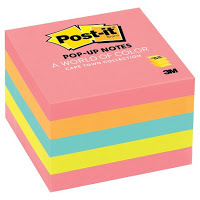
Lots of these are filled with questions:--What is the difference in class schedules between Groups A and B?--What telling details can bring this character to life?--What are the size and layout of this room?
Other sticky notes are nudgers:--Flesh this out.--More crackle in the dialogue,--Too soon (or too late) for this clue.--Maybe this should go.--This isn't quite clear or quite there.
And still other stickies are fillers for blanks in the first draft:--Quote on insurance frauds.--Stats on bad faith insurance lawsuits..--Menu for high-class cuisine.Etc.
*****
So what's the difference, some may ask? Grooving on all three parts of the creative process energies and uplifts me. And I'd feel cheapened if I cheated on any of the three. By the same token, I'd feel cheated if I cheapened any part, cutting it short because 'writing' is more fun.
Post-production, for me, is a theme park of fun. And it's at the heart of what I do.
If you haven't already, do give it a try. When you're in the post-production zone your brain looks a little like this:
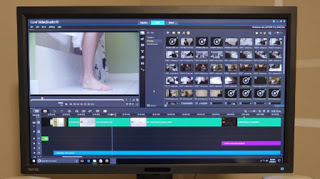
Published on December 09, 2018 09:32
November 19, 2018
Two Bold and Cool Mystery Departures
![Antiques and Alibis (Cass Claymore Investigates Book 1) by [Jones, Wendy H.]](https://i.gr-assets.com/images/S/compressed.photo.goodreads.com/hostedimages/1542913617i/26635209.jpg)
![Realtors For Sale (Sidekicks Mystery Series Book 1) by [Rapp, Diane]](https://i.gr-assets.com/images/S/compressed.photo.goodreads.com/hostedimages/1542913617i/26635210.jpg)
As a writer and a reader, I'm doubly excited to tell you of a pair of best-selling authors who decided to try something different.
Wendy Jones is best known for her DI Shona McKenzie mysteries. Antiques and Alibis is a wildly different delight.
www.amazon.com/Antiques-Alibis-Cass-Claymore-Investigates-ebook/dp/B07FVSTGLT
Diane Rapp has thrilled mystery lovers with her High Seas mystery series. Realtors for Sale is equally fresh...in a doggy new way.
www.amazon.com/Realtors-Sale-Sidekicks-Mystery-Book-ebook/dp/B07HHGQMJN
Published on November 19, 2018 07:32
November 5, 2018
Confessions of a Thrift Store Fashion Shopaholic: Part 1
Unlike many of you, I'm not made of money. Again though, unlike many, I turned into a fanatic about building a wardrobe of high-ticket clothes--for which I pay a good deal less than cheapskates pay for crap.
Why would I do this, some may ask, if I can't afford at present to roam the globe or fly first class or even buy a modest mansion?
1) The best clothing doesn't just cost more, The silhouette and fabric, combined with a jacked sense of pride, release your inner tiger.
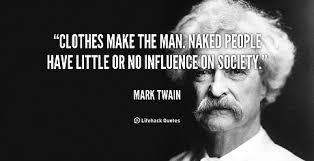
2) Dress for success, indeed. But we also must dress for all kinds of success. I don't need a slew of formal sportcoats or dozens of button-down plain or pinstriped shirts. What's right for one job interview may not be right or another. I learned a long time that overdressing's as off-putting as showing up in rags. I've also paid steep prices for being wrongly or under-dressed because I lacked a versatile wardrobe.
3) Most people can see the difference between a cheap knock-off at Macy's and a real Armani coat or shirt. After my first book, The Suiting, won a Stoker award, the Canadian tailor who inspired the book gave me a beautiful suit. One day while I wore it on New York subway platform, a conductor hit the brakes and cried: 'Jesus, where'd you get that suit!"
4) That said, how could I get the best quality threads without paying a king's ransom?
I narrowed it down to three choices.

a) I could shop at discount clothing stores like Ross Dress For Less or T. J. Maxx.
b) I could rummage through the sale and clearance racks at big department stores.
c) I could search until I found a thrift store that succeeded in ringing my bells: clean, in a good part of town, with regular replenishment of new and like-new men's clothes.
Why was C the choice for me?
Discount and sale/clearance racks are generally potluck. They include returns, 'imperfects' and onesies or twosies (of a kind) marked down to make room for new stock. Most often, the things that you want aren't your size. And the no matter how low the clearance price is, it's more than you'd pay at choice C.
Your eyes and nose will tell you if you're about to enter the wrong thrift store for you. If you see grungy carpeting or smell formaldehyde (used by some stores to 'clean' the clothing they acquire), back off. Do not go in. You're likely to get a dreadful formaldehyde hash or take bed bugs home with you. God bless Salvation Army, but shop for your clothes elsewhere.
I found my store in Ballard, an upscale Seattle 'hood. It's clean and bright with tiled floors. Here's a photo taken of the store on its opening day,

My immediate needs for a job search were these: dress shirts, sportcoats, slacks and shoes. Over time I scored on all fronts. These examples are offered to show you a little thrift store math. All of these items were new like-new:
--Dress shirts by top designers or name brands: Ralph Lauren, Tommy Hilfiger, Thomas Pink of London, Nordstrom, Calvin Klein, Brooks Brothers, Kenneth Cole, etc,
Sale: $12-$18. Average: $13.
--Sportcoats by Kenneth Cole, Ralph Lauren, Calvin Klein, Henry Grethel.
Sale: $9.99-$25. Average: $15.
As I write this post, I'm gearing up to change jobs. At last have the confidence that comes from knowing I've got the right look for wherever I go.
Next week I'll share the brass tacks of how I conducted my search over a six-month period.
Why would I do this, some may ask, if I can't afford at present to roam the globe or fly first class or even buy a modest mansion?
1) The best clothing doesn't just cost more, The silhouette and fabric, combined with a jacked sense of pride, release your inner tiger.

2) Dress for success, indeed. But we also must dress for all kinds of success. I don't need a slew of formal sportcoats or dozens of button-down plain or pinstriped shirts. What's right for one job interview may not be right or another. I learned a long time that overdressing's as off-putting as showing up in rags. I've also paid steep prices for being wrongly or under-dressed because I lacked a versatile wardrobe.
3) Most people can see the difference between a cheap knock-off at Macy's and a real Armani coat or shirt. After my first book, The Suiting, won a Stoker award, the Canadian tailor who inspired the book gave me a beautiful suit. One day while I wore it on New York subway platform, a conductor hit the brakes and cried: 'Jesus, where'd you get that suit!"
4) That said, how could I get the best quality threads without paying a king's ransom?
I narrowed it down to three choices.

a) I could shop at discount clothing stores like Ross Dress For Less or T. J. Maxx.
b) I could rummage through the sale and clearance racks at big department stores.
c) I could search until I found a thrift store that succeeded in ringing my bells: clean, in a good part of town, with regular replenishment of new and like-new men's clothes.
Why was C the choice for me?
Discount and sale/clearance racks are generally potluck. They include returns, 'imperfects' and onesies or twosies (of a kind) marked down to make room for new stock. Most often, the things that you want aren't your size. And the no matter how low the clearance price is, it's more than you'd pay at choice C.
Your eyes and nose will tell you if you're about to enter the wrong thrift store for you. If you see grungy carpeting or smell formaldehyde (used by some stores to 'clean' the clothing they acquire), back off. Do not go in. You're likely to get a dreadful formaldehyde hash or take bed bugs home with you. God bless Salvation Army, but shop for your clothes elsewhere.
I found my store in Ballard, an upscale Seattle 'hood. It's clean and bright with tiled floors. Here's a photo taken of the store on its opening day,

My immediate needs for a job search were these: dress shirts, sportcoats, slacks and shoes. Over time I scored on all fronts. These examples are offered to show you a little thrift store math. All of these items were new like-new:
--Dress shirts by top designers or name brands: Ralph Lauren, Tommy Hilfiger, Thomas Pink of London, Nordstrom, Calvin Klein, Brooks Brothers, Kenneth Cole, etc,
Sale: $12-$18. Average: $13.
--Sportcoats by Kenneth Cole, Ralph Lauren, Calvin Klein, Henry Grethel.
Sale: $9.99-$25. Average: $15.
As I write this post, I'm gearing up to change jobs. At last have the confidence that comes from knowing I've got the right look for wherever I go.
Next week I'll share the brass tacks of how I conducted my search over a six-month period.
Published on November 05, 2018 13:18
October 28, 2018
Coming November Attractions
I've been remiss in updating this blog. But I pledge to behave in November, I swear.
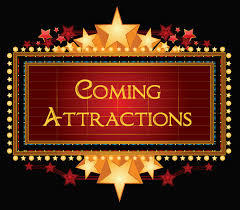
You'll get:
--An update on my job search and the new strategies I've taken.
--A passionate post on readiness and planning for good luck.
--Secrets of a thrift store veteran and how my killer wardrobe came to include a wool/cashmere sport coat worth $600, 3-dozen designer shirts and an authentic navy peacoat.
--A special post about--(surprise!).
Stay tuned. You're gonna like November.

You'll get:
--An update on my job search and the new strategies I've taken.
--A passionate post on readiness and planning for good luck.
--Secrets of a thrift store veteran and how my killer wardrobe came to include a wool/cashmere sport coat worth $600, 3-dozen designer shirts and an authentic navy peacoat.
--A special post about--(surprise!).
Stay tuned. You're gonna like November.
Published on October 28, 2018 16:51



